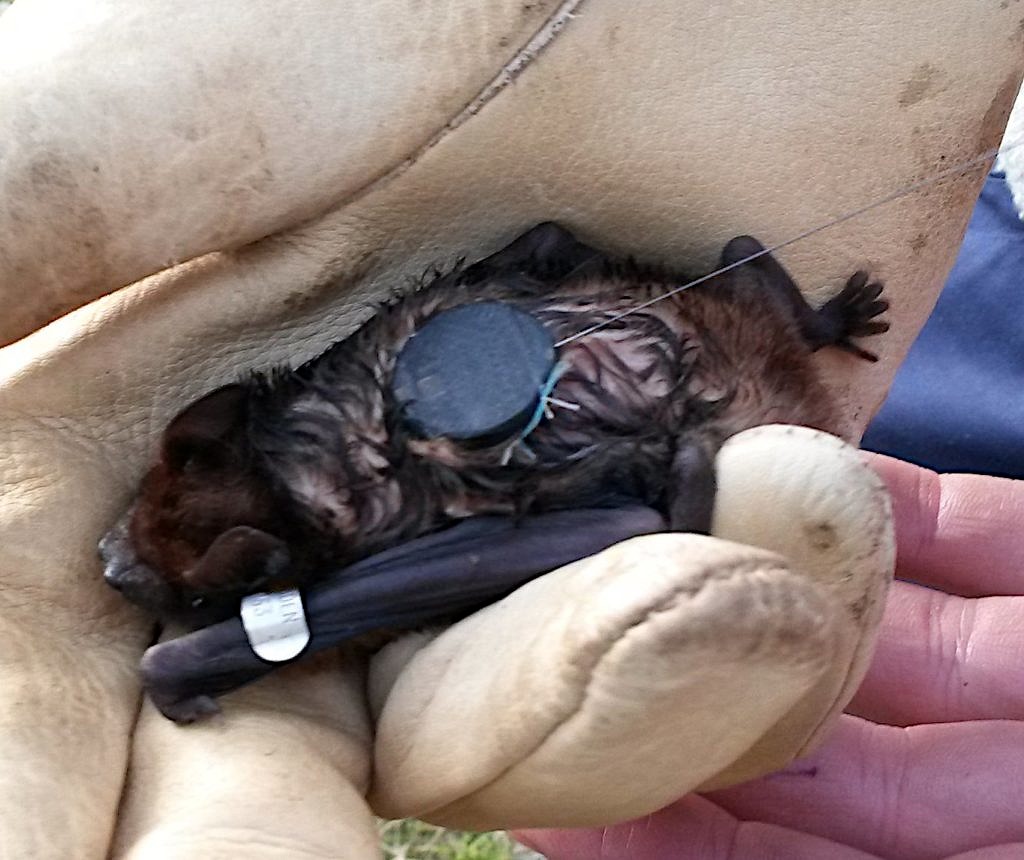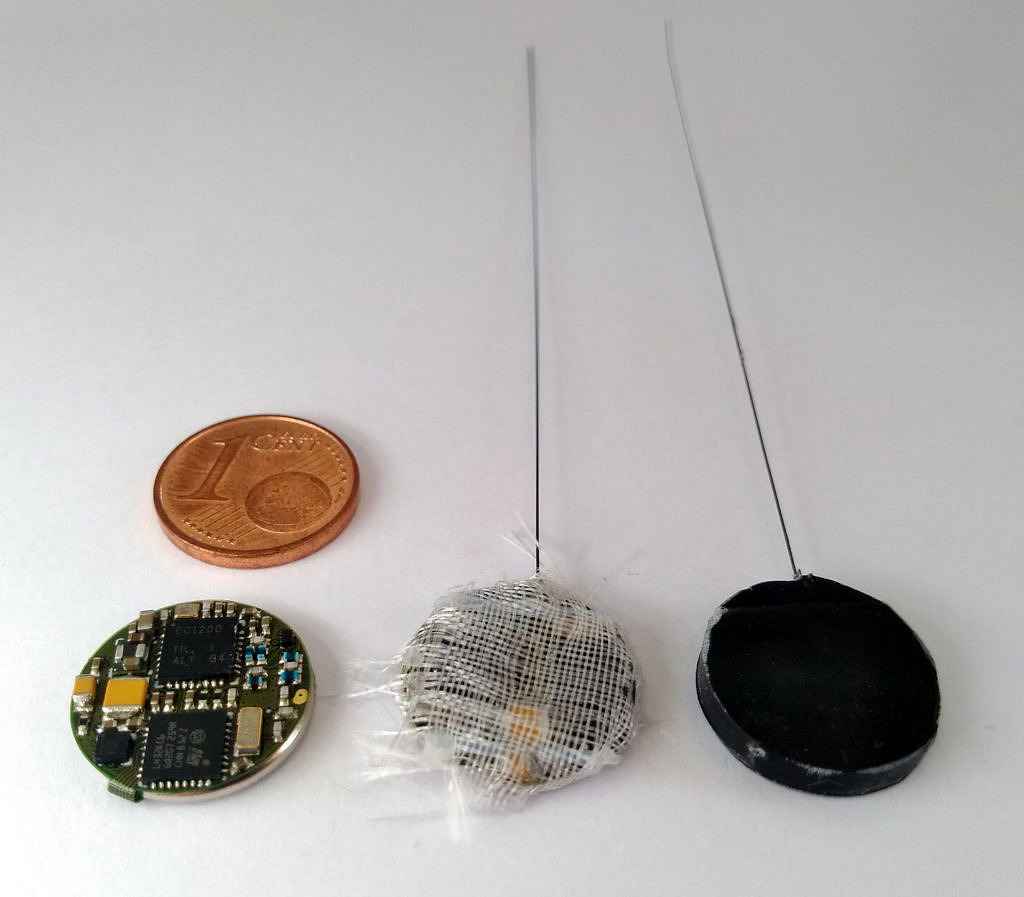Mobile-BAT
Mobile Based Animal Tracker (Mobile-BAT)
(Third Party Funds Single)
Title of the overall project:
Project start: 01/01/2017
Acronym:
Funders: DFG-Einzelförderung / Sachbeihilfe (EIN-SBH)
Abstract

Fledermaus mit Mobile-BAT Empfänger
This project Mobile-BAT will investigate methods for automated tracking of migration routes of bats based on miniaturized sensing module for low power passive cellular network detection. This module will be mounted to the dorsum of the migrant Noctule Bats and will track the route over one total season with an accuracy which will enable to draw conclusions to migrant and rout selection strategies of the animal. For limiting as far as possible the mobility restrictions of the bat and disturbance of the natural behavior by the localization module, the sensor node has to exhibit a weight below 2 gram including battery, circuitry as well as antenna system and feature a suitable form factor. Due to the required operation time for covering one entire migration period of up to six months concepts have to be found for ensuring the localization from the limited energy resources. The data logger will be manually retrieved and the stored data evaluated after the return of the animal to the initial habitat. The locating of the respective individuals will be supported by automated direction finding and triangulation of a specific low power VHF telemetry signal transmitted by the sensor node after detection of the return to the initial habitat. From the logged cellular base station parameters, the trajectories of the routes chosen have to be extracted. For this goal topographic information will be added to propagation models for mobile phone signals enabling an automated calculation of an estimated signal constellation for any arbitrary coordinate. The stored sensor node data will be mapped to this database and will result in a highly accurate migration route trajectory. The benefit of the proposed methodology is that due to the passive system approach the sensor node is not required to loggin to a certain provider and is therefore able to logg all receivable base station signals in any frequency bands. This will lead to a large amount of analyzed base stations and therefore to calculated position with high accuracy.The project Mobile-BAT will enable fundamental insight into migration strategies of bats. Besides this concrete application it is expeted that the cellular based self-localization will lead to essential findings in the context of wireless sensor networks and internet of things applicable in nearly any country of the world.

Produktionsschritte des Mobile-BAT Empfängers
Publications
- , , :
Receiving GSM Broadcast Channels with an Ultra-Low Power Sub-GHz Transceiver
European Microwave Conference (Nürnberg, 10/10/2017 - 12/10/2017)
DOI: 10.23919/EuMC.2017.8230869
BibTeX: Download - , , :
A Small and Lightweight Ultra-Low Power GSM Cell Tracker
2019 IEEE Topical Conference on Wireless Sensors and Sensor Networks (WiSNet) (Orlando, Florida, 20/01/2019 - 23/01/2019)
DOI: 10.1109/WISNET.2019.8711804
BibTeX: Download - , , , , :
An Automatic Detection and Data Downlink System for Miniature Bat Loggers
IEEE Radio and Wireless Symposium (RWS) 2020 (San Antonio, Texas, 27/01/2020 - 29/01/2020)
DOI: 10.1109/RWS45077.2020.9050051
BibTeX: Download - , , , , :
Design and Assembly of Miniature Long-Term Trackers for Migrating Bats
German Microwave Conference 2020 (Cottbus, 09/03/2020 - 11/03/2020)
BibTeX: Download - , , , :
Enhanced GSM Broadcast Receiver using the Phase Output of a Sub-GHz Transceiver
2018 48th European Microwave Conference (EuMC) (Madrid, 25/09/2018 - 27/09/2018)
DOI: 10.23919/EuMC.2018.8541538
BibTeX: Download